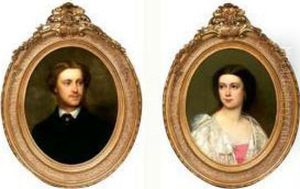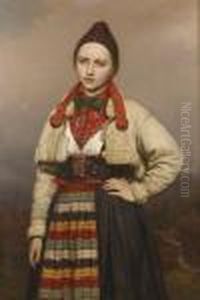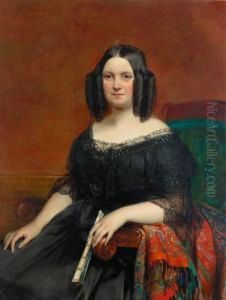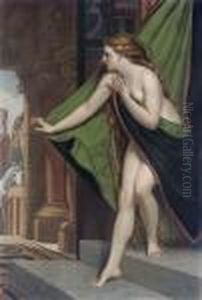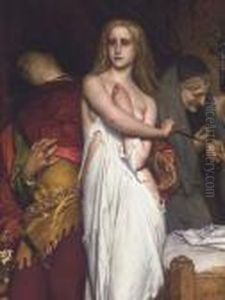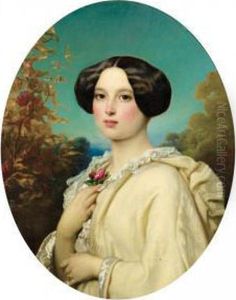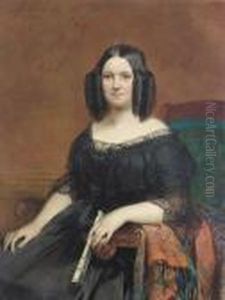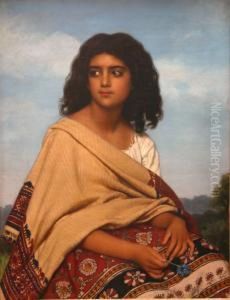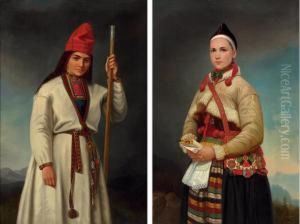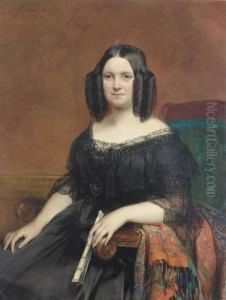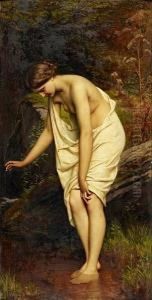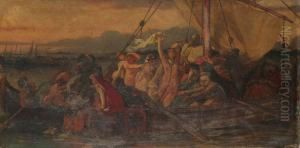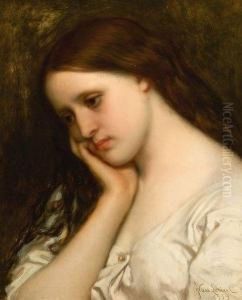Joseph Van Lerius Paintings
Joseph Van Lerius was a Belgian painter born in 1823, in the city of Boom, Belgium. He was known for his contributions to the Romanticism movement, which emphasized emotion and individualism, a departure from the classical norms of the time. Van Lerius studied at the Royal Academy of Fine Arts in Antwerp, a prestigious institution that has nurtured many notable artists. Under the guidance of Nicaise De Keyser, a prominent Belgian painter, Van Lerius honed his skills and developed a distinctive style that combined the technical precision of classical art with the emotive qualities of Romanticism.
Throughout his career, Van Lerius achieved recognition for his historical and mythological paintings, which were praised for their vivid portrayal of human emotions and beauty. His works often featured themes of love, tragedy, and mythology, capturing the imagination of the viewer and inviting them into the narrative. One of his notable works includes 'The Death of Cleopatra', which showcases his skill in depicting dramatic and poignant moments with a depth of emotion.
Despite his success, Joseph Van Lerius's life was marked by personal tragedy and health issues, which influenced his work and may have contributed to his relatively early death in 1876 at the age of 53. His legacy, however, lives on through his contributions to Belgian art and the Romanticism movement. Van Lerius's works are held in high regard and continue to be studied and appreciated for their emotional depth and beauty. His influence can be seen in the work of later artists who were inspired by his approach to portraying the human condition and the natural world.
Van Lerius was also a respected teacher at the Royal Academy of Fine Arts in Antwerp, where he shared his knowledge and passion for art with the next generation of artists. His dedication to art education helped to cultivate a rich artistic environment in Belgium, contributing to the country's cultural heritage. Today, Joseph Van Lerius is remembered not only for his artistic achievements but also for his role in shaping the artistic landscape of 19th-century Belgium.
